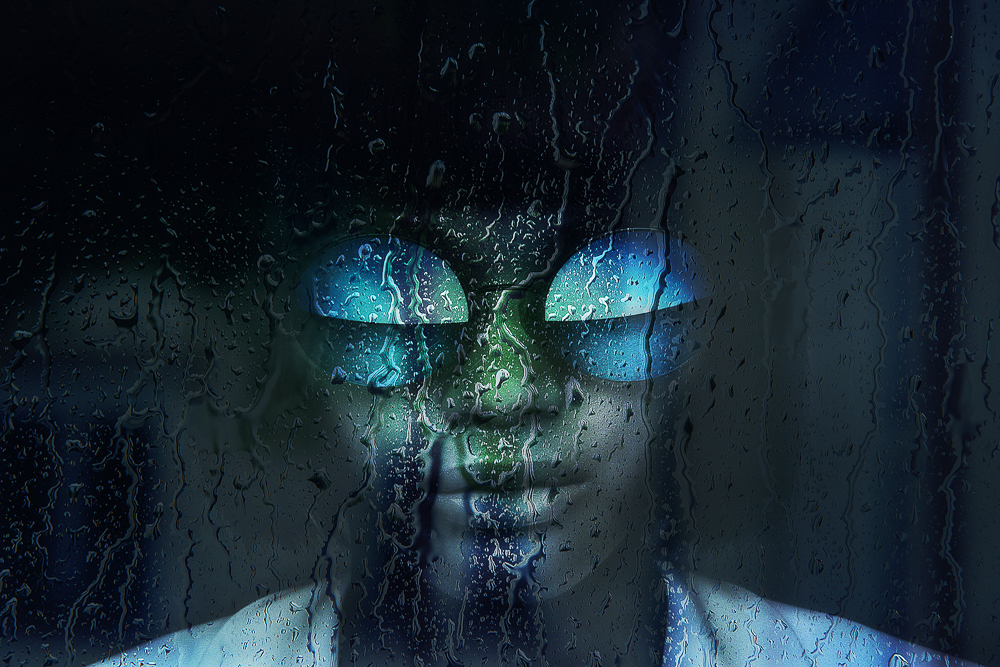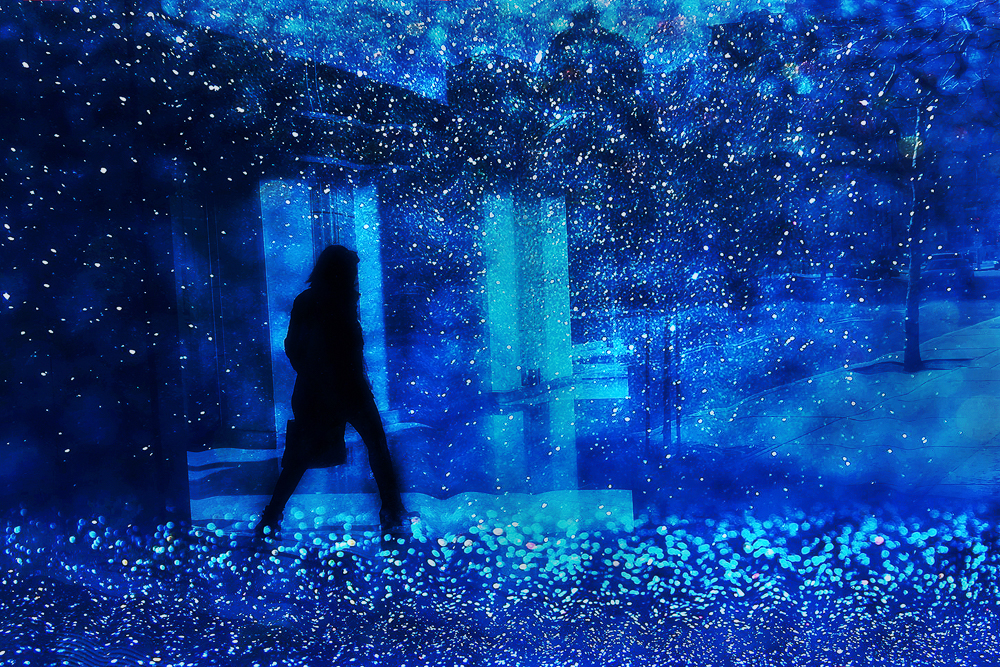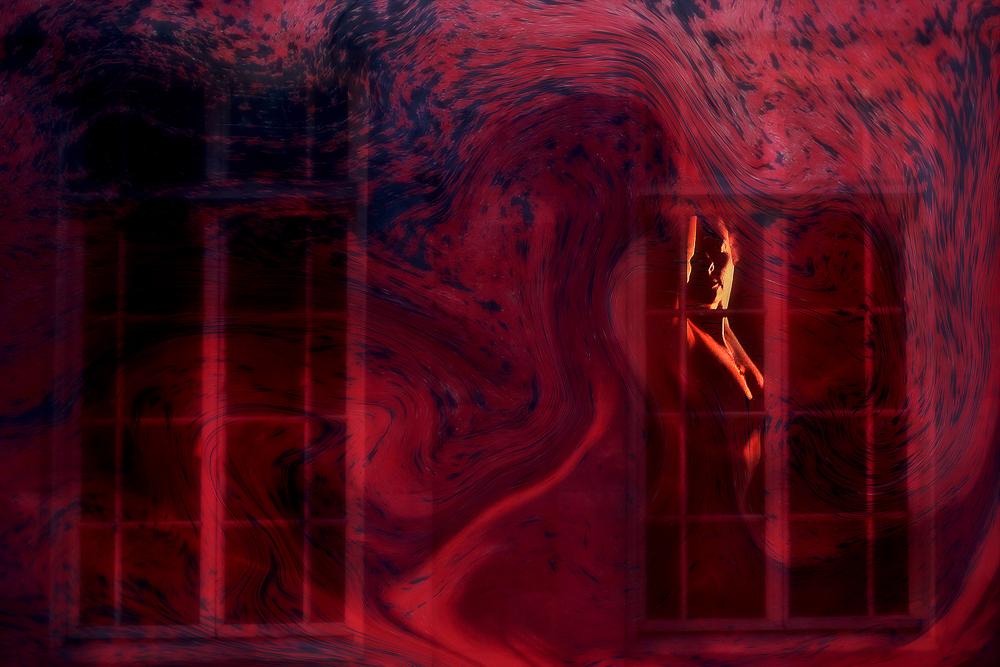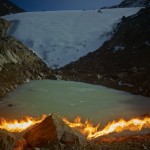Maurice Henri: Cameras for Healing
Two years ago, in my interview with Ann Shi of Rice University for the Houston Asian American Archive, she asked if I advocated for any special causes. I was at a loss for an answer. I had taken up photography as a form of self-therapy and was motivated by personal needs rather than a greater cause.
That question stayed at the back of my mind after the interview and resurfaced when I met Maurice Henri at the week long INSCAPE workshop with Freeman Patterson and David Maginley last year. The workshop encouraged us to “investigate our inner landscape through creating art and working with dreams.” Maurice was one of the two male participants in this eight-person workshop. We bonded over our tongue-in-cheek approach to life, our irreverence for authority and our similar sense of humor. As the days passed, I learnt about his near-death experience from prostate cancer, the violent attack he had suffered at the hands of a stranger who wanted the camera hung around his neck, and the emotional toll he suffered when the crowds of people around him chose not to help. He spoke about “Cameras for Healing,” the non-profit organization he founded in 2002 to help cancer patients and survivors deal with the pain and stress of their illness. Since then, he has expanded his reach to children, women, and men dealing with difficult situations.
The Wisdom of Sandoui
In his presentation to workshop participants, Maurice told us why he had started “Cameras for Healing.” After a photography trip to South Africa with Freeman, he stayed behind for an extra two weeks. He came upon a small village in the mountains called Nourivier where he met an eight-year-old girl, Sandoui. He had brought fresh fruit for the children. They crowded around him and he started handing out the fruit, beginning with Sandoui. Instead of devouring it immediately, she smelled it and hugged it. The scene remains forever etched in his memory. Her action baffled Maurice, who had thought she would have eaten it immediately given how hungry they all were. He later learnt that she could not bear to eat it straightaway because the orange was symbolic to her. Maurice’s gesture of handing an orange to her before any of the boys made it clear to her that she mattered and that her life mattered as a young girl. It defied her society’s norms, where men came first. She wanted to sleep with the fruit, wake up and savor that same feeling of importance for another day, before eating it.
When asked if she had a dream, Sandoui responded that people like her didn’t have dreams because they had no future. She said a dream was like a rainbow, full of colors, possibilities, hope and peace, and it was beyond her reach. When Maurice pressed her a little further, she admitted that she hoped her village would get a school. She wanted to learn to read and write so she could teach children and take care of her village when she was older.
The Birth of “Cameras for Healing”
Maurice was profoundly moved by their conversation. Sanduoy had been forced to grow up quickly, showing wisdom well beyond her years. To fulfil her dream, he sold limited edition photographs from this trip to build a school. “Cameras for Healing” was born from this effort. Then he wanted to do more so he started researching poverty and war.
Sierra Leone – Baptism by Fire
In the course of his research, he learned about the trauma of Sierra Leone’s civil war, where young boys were kidnapped and brainwashed to become child soldiers, and where young girls were forced into sexual slavery. Maurice said, “This was trauma on steroids.”
After researching and planning for about a year, he led a small team of volunteers, including a psychologist, to a small village near Freetown. He partnered with local people to bring together groups of young adults and equip them with cameras. Over seven days, they taught participants how to use the cameras. When the participants became more confident, they were assigned certain projects.
Maurice asked them to photograph “what gives them hope, what makes them happy, and what makes them proud.” To his surprise, almost all photographed their children. When they were given prints of their photographs, they erupted in joy. These prints served as a record of their children’s existence. Those who had lost their children during the war had no physical evidence of their existence, and had only memories to seek comfort in.
Another magical thing happened. At the start of the workshop, the women and the men were understandably extremely wary of each other, given what had happened in the past. They sat separately, with a huge emotional and physical divide between them. Over the course of the workshop, however, they began to see each other for the human beings they were before the war and began to interact and become comfortable with each other. In a defining moment, one of the women went over the men’s side to hug them.
The equal treatment and respect that Maurice showed to both his male and female volunteers served as a new behavioral template for both the men and women of the village. The men saw that the women should be treated as equals and with respect, while the women learnt that they should not let themselves be pushed around. Over the next five years, Maurice would return twice a year to Sierra Leone.

©Maurice Henri, Moyamba, Sierra Leonne: Along with her two sisters, she adopted over 200 children who lost their parents during the war.
Haiti – Rebuilding Lives
Later, he made a three-year commitment to work in Haiti with teenagers who had been orphaned or abandoned in the wake of the 2010 earthquake. The orphaned boys often joined gangs and engaged in crime and drugs, while the orphaned girls often ended up as sex workers. Maurice’s goal was to give them an education and break the vicious cycle.
Many had lost limbs. Maurice partnered with a company that made prosthetics to help them physically and used photography to help rebuild their confidence. The women, especially, felt they could never find happiness because they were not “whole.”
Moncton – Helping People at Home
In 2013, armed with credentials and international recognition due to his efforts described above, Maurice launched two initiatives in his hometown in Moncton, Canada. The first was “My Story,” which aimed to help children who were suffering from poverty and abuse. Over 100 children benefited from this program. He said, “My knees got weak” when some of these children, whose main thoughts had revolved around suicide, called to say they were graduating or they were becoming teachers. It’s stories like these that keep him going.
The second initiative was “Images of Dignity,” when he worked with fourteen to fifteen adult women who were suffering from poverty, abuse and/or addiction. Previous projects had involved a balanced representation of men and women, but this project involved only female participants. Several of them were highly educated professionals suffering from spousal abuse and addiction.
During Covid, the women wanted to continue their conversations and photography projects. So Maurice started the Artquest Photography Workshops, which were initially conducted via Zoom and expanded to include day trips post-Covid.
Restarting – Images of the Heart
When life started to normalize in 2022, Maurice was diagnosed with prostate cancer and needed to undergo surgery and prioritize his recovery. After spending a year recuperating, he launched a new initiative, “Images of the Heart.” For this program, he is pairing young women (now 18 to 21 years old), who were participants in “My Story,” with the women (now 65 years old and above) from “Images of Dignity.”
Maurice said, “I want to combine the wisdom of age with the energy and curiosity of youth.” Through this new 12-week program, he hopes they will inspire one another.

©Maurice Henri, Kenema, Sierra Leone: With our help, this girl achieved her dream of becoming an educator despite the war’s devastating impact.
Why help? Maurice’s Sense of Justice
I told Maurice, “I get what you do but I still don’t get you. I mean why did that encounter with Sanduoy moved you to set up a school in Africa? What prompted you to set up these projects like the one in Sierra Leone, Haiti, and back in Moncton?” I blurted out, “Did you have a difficult childhood?”
He laughed heartily and said that he’d had an amazing childhood with very loving and nurturing parents. His mother worked, which was unusual in the ‘60s when most women were homemakers. They were French but lived in a predominantly English town. His father was the first French Arcadian to own a theater. In the ‘50s and ‘60s, women in the theater business were either actresses, seamstresses, or make-up artists. His father defied convention and put women in charge of directing plays and organizing events and variety shows. One of these women, who became a rather well-known TV producer in Moncton, made a documentary on his life to recognize and thank him for opening the doors to allow her to start a career in the movie business. Other women also came forward in the documentary to express their gratitude.
Regarding his sense of justice, Maurice recalled how his schoolmates used to bully a boy, Pierre, whose speech was challenged and whose arm and leg were crooked after a car accident. Maurice became his friend and walked him to school and back home daily to protect him from the bullies. He spoke more loudly to scare them off, without resorting to violence. He wanted Pierre to know that he mattered.

©Maurice Henri, Kissy, Sierra Leone: With some of the children we cared for, including lovely Bindou, with whom I had an extraordinary bond.
In recognition of all his efforts, Maurice was awarded the YMCA Peace Medallion 2010, the Order of Moncton in 2011 and Rotary’s Paul Harris Fellowship Award in 2012.
To thank the hospital doctors and nurses for saving his life, Maurice donated the proceeds from his latest abstract photography series called Watercolor in the Rain (see below) to the Friends of the Moncton Hospital Foundation.
He said, “Simply saying thank you is not enough. I owe tremendous gratitude to the doctors, nurses, and staff of the Moncton Hospital. They ensured that I was always given the best care. Their compassionate attention and professional care saved my life. I deeply appreciate their effort and dedication to the healing process.”
So, this is my friend, Maurice Henri, a compassionate human being and a gifted photographer. He is 65 years old and shows no signs of slowing down. I’m grateful to know him.
If you are interested in learning more about his projects, please visit https://www.camerasforhealing.com
“I find my inspiration in natural and urban settings, exploring the interaction between light and shadow to create harmonious images. This led me to create Watercolor in the Rain, which expresses my fascination with the reflective colors of rainy weather and how they can create graphic photographs.
“Although many photographers shy away from inclement weather, I find shooting in the rain rewarding. The dramatic mood and meditative state it evoke make it an unpredictable experience. For the project, I spent countless hours contemplating how to capture the peaceful and magical side of rainy weather. I used bold, contrasting light and dark colors to induce a tranquil state in the chaos of rain and windy weather. The scenes I encounter are short-lived. The wind speed shifts, the water stirs, and the picture can never be repeated.
“The camera is my instrument, and I use in-camera multiple exposures and camera movement to create my impressionistic images. I seek to unite the tension between tranquillity and turmoil, movement and immobility, realism and abstraction in my work. I create complex and layered images that conceal the labels that could be placed on what I am photographing.
“Through my photographs, I hope to share the mood and nurture connections with the viewer, causing them to pause and experience a moment of calm, mystery, inspiration, or insight.”
Maurice Henri is a renowned photographer who has been engaged in portrait, stock, advertising, commercial and fine art photography since 1988. His clients include advertising agencies, design studios, independent professionals, art directors, and both private and corporate art collectors. His work has been featured in several solo and group exhibitions at art galleries and museums, and published in magazines and books. Select images can be found in the permanent collection at the African American Museum and Center for Education and Applied Arts in New York.
He was the host and producer of a television series, FOTO that aired in Canada and received nominations for excellence in education and arts. He is the founder and director of Cameras for Healing and Photo Moncton International Photography Festival. He is the Co-Founder of Fotografia Dosquebrados Photography Festival in Colombia, South America. In 2004, he founded ArtQuest Photo Tours and Workshops to organize events around the world. In recognition of his efforts, he was awarded the YMCA Peace Medallion in 2010, the Order of Moncton in 2011 and Rotary’s Paul Harris Fellowship Award in 2012.
Maurice’s mission in photography is to bring together the hearts and minds of people viewing his work. He hopes the experience of attending his exhibitions will foster a capacity for deeper inquiry and a heightened appreciation of fellow human beings. His images are about his passions: the people and places that touch his soul. He believes that mood, emotion, and light must come together to convey meaning, and strives to achieve that. Without emotion, the photograph appears staged and lacks authenticity.
Follow Maurice Henri on Instagram: @ mhenriphoto
Thank you to Xuan-Hui Ng
Follow on instagram: @xuanhui_ng
Posts on Lenscratch may not be reproduced without the permission of the Lenscratch staff and the photographer.
Recommended
-
Earth Week: Simon Norfolk: When I am Laid in EarthApril 27th, 2024
-
Shinichiro Nagasawa: The Bonin IslandersApril 2nd, 2024
-
The International Women in Photo Association Awards: Lorraine Turci: The Resilience of the CrowMarch 16th, 2024
-
The International Women in Photo Association Awards: Rayito Flores Pelcastre: Chirping of CricketsMarch 14th, 2024
-
The International Women in Photo Association Awards: Louise Amelie: What Does Migration Mean for those who Stay BehindMarch 12th, 2024










































































